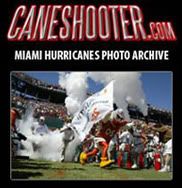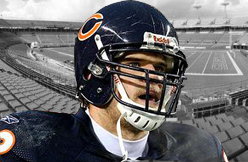BOURBONNAIS, Ill. -- On a random August evening, I felt a crisp breeze and for a moment thought I was standing at a fall practice. It was an unusually cool night on the campus of Olivet Nazarene University. All around me were signs of midseason football.
The Chicago Bears were rolling through a two-minute drill with a precision that suggested they had been practicing for months, not weeks. One constant stood out, however, as the Bears' offense moved down the field. Three times in an eight-play drive, quarterback Jay Cutler found tight end Greg Olsen downfield. Olsen's first two catches converted first downs, and on the third, he one-handed the ball in the corner of the end zone for a touchdown.
Teasing Olsen afterward, Cutler said: "Do you ever use two hands?"
The connection between Cutler and Olsen is no joke, of course. Olsen emerged in camp as Cutler's most trusted and reliable target, the de facto No. 1 receiver on a team with an otherwise inexperienced group of pass-catchers.
The Bears have elevated Olsen to starting status after two years behind veteran Desmond Clark, and the intersection of those events makes Olsen our choice as the NFC North's Emerging Star for 2009.
Even while splitting time last season with Clark, Olsen caught 54 passes; that total was the 10th-most among NFL tight ends and the highest total for a Bears tight end since Mike Ditka caught 75 in 1964. With additional playing time this season and his clear chemistry with Cutler, it seems Olsen is poised to take over the Bears' offense.
"I think people are going to be surprised at how good our receivers are going to be and how much those guys can make plays," Olsen said.
"[But] I look at myself as someone that can be 'That Guy.' I feel like I can do a lot of different stuff: Play the receiving role, play tight end and just do whatever I can to help other people get open or make the play myself. I kind of embrace that and have those high expectations of myself."
Olsen's combination of size (6-foot-5, 255 pounds) and speed (he ran the 40-yard dash in 4.51 seconds during the 2007 scouting combine) provide the Bears enormous flexibility in developing their pre-snap formations. He appears equally comfortable lining up as a tight end, H-back, slot receiver or outside receiver. That versatility helps offensive coordinator Ron Turner create mismatches and keep defenses guessing.
"He's a tight end and we feel confident lining him up on the line to block a defensive end," Turner said. "But he also gives us all kinds of flexibility. We'll have packages for him everywhere on the field."
That confidence didn't crystallize until Olsen improved his blocking skills to reach the Bears' standards. Like many pass-catching tight ends, Olsen wasn't asked to block much while playing at the University of Miami. As a result, he spent much of the past two years learning technique and understanding how to use his body.
"Everybody knew he came in as a great receiver," Clark said. "It was funny watching him trying to block his first year. He admits it -- he didn't work on his footwork and that kind of stuff at Miami because he didn't have to. When he got here, me and [former Bears tight end John Gilmore] used to sit back and crack jokes about it. Now, when you look at his footwork, it's right there with any tight end in the league. So the past couple years, he's really put in the work to get better."
The key, Olsen says, is accepting that technique can help overcome size and strength differential.
"Very rarely is the tight end going to be the bigger of the two guys matched up," he said. "There are very few guys who can overpower a defensive end. It's not going to happen. So especially for us lighter guys, we've got to win with things like footwork and hand placement. I never realized how important that really was. Getting good leverage, learning angles and hand placement and footwork -- all of that goes a long way. People think it's just whoever is bigger and stronger, but that's not really the case."
As he polished his blocking skills this spring, Olsen also focused on developing a relationship with Cutler -- whose April arrival was late by NFL (or, at least, non-Favre) terms. They spoke by phone a few hours after the Bears finalized his acquisition, met a few days later and continued working together this summer after the Bears' offseason program concluded.
For much of July, Olsen, Cutler and other Bears receivers worked through the passing tree on their own time at the team's practice facility. Midway through training camp, Olsen estimated he and Cutler understood each other's thinking 85-90 percent of the time.
"I feel like we have a fairly good idea of what each other wants to do," Olsen said. "Once we get into game-planning, that's where the rest of that comes into play."
With improved blocking, more playing time and an elite-level quarterback, Olsen seems poised for a breakout year. He'll need a monster performance to earn Pro Bowl honors now that perennial All-Pro Tony Gonzalez has moved to Atlanta and the NFC. But at the very least, everything is in place for Olsen to elevate his name into those elite conversations. Already this summer, he is in midseason form.
"Personally, I feel like I can put myself into that group, which over the past couple years has really been the same guys," Olsen said. "The Gonzalezes, the Jason Wittens, the Dallas Clarks, [Antonio] Gates are kind of the usual suspects when you talk about the best tight ends in the game. Personally, I feel like I have the ability to be one of those guys now that I'm becoming a veteran guy. Those guys have all put in six, seven or eight years in the league.
"I feel like as a young guy I can put myself up there and be one of those guys."

(espn.com)


